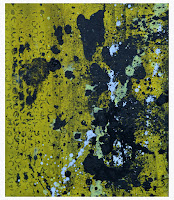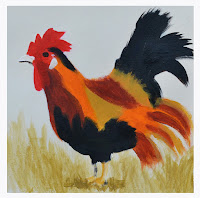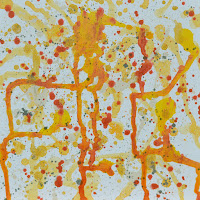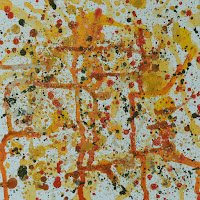The larger one 40cm x 50cm was supposed to be green, yellow, red and black, but as ever I was in a hurry and couldn’t wait for the black to dry. The first layer was really nice but the white of the canvas was showing; more black was added and it covered up some of the good stuff. The green was an acrylic ink and a little watery so when the third layer dried it was very translucent. The final layers were in Jackson Pollock style. I may work on it some more but for now it’s done.
 The smaller one 25cm x 30cm was originally just yellow and black. My husband liked it but I felt it wasn’t finished. Using the JP style, I painted outside in my garden and boy was it cold... but worth it. I love this style of painting because you can always rework it and it’s never wrong.
The smaller one 25cm x 30cm was originally just yellow and black. My husband liked it but I felt it wasn’t finished. Using the JP style, I painted outside in my garden and boy was it cold... but worth it. I love this style of painting because you can always rework it and it’s never wrong.





















